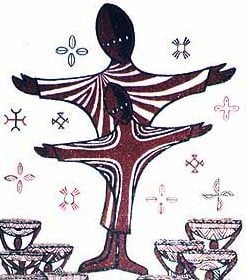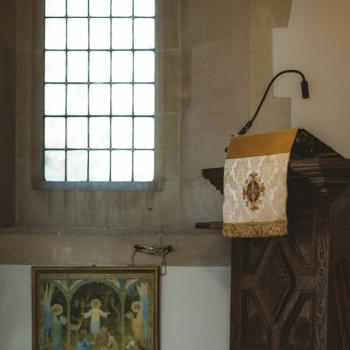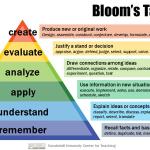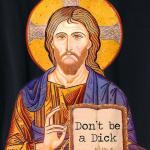 In his book, Divine Teaching, Mark MacInosh outlines the analogies or metaphors that the church has used to try to explain what happens from Good Friday through Easter Sunday.
In his book, Divine Teaching, Mark MacInosh outlines the analogies or metaphors that the church has used to try to explain what happens from Good Friday through Easter Sunday.
The medical metaphor for salvation emphasizes healing — deep healing that touches the whole of our existence. The saving work of Jesus restores harmony to our lives, beginning with our relationship with God. It touches us deep within and it touches our relationships with others.
The legalmetaphor takes its point of departure from notions of disobedience and its consequences. Jesus does not leave us alone with the consequences of our own self- and other- destructive behavior. He is in it with us, all the way. But he isn’t in it with us all the way for the sake of suffering. He is in it for the sake of deliverance. The cross, then, is not God’s last word or God’s doing. It is the Resurrection that signals God’s verdict. Jesus does not enter our lives in order to leave us among the dead. Jesus takes on human flesh in order to lead us out of death’s grasp.
The cosmic-historical picture of God’s saving work draws on the sweep of the biblical narrative, from Genesis to Revelation. Jesus enters into our human lives. He hears. He lives out of deep congruence with the will of God and he calls together a new community to share in his life. In so doing Jesus introduces us to the purposes of God and our true identity as “the children of God.” He also creates a new beginning for us and for the world.
The military-political metaphor takes its cue from Israel’s deliverance from Egypt. Jesus reclaims our lives from enslaving forces, just as God delivered the children of Israel from slavery. The control that illusion and deceit exercise over our lives is broken. As the new Moses, Jesus leads us out of our enslavement to the power of the lies and cruelty that misshape us and the lives of those around us. War isn’t what matters here. It’s freedom.
The sacrificial analogy takes the Temple as its point of departure and breaks with the assumptions about sacrifice that shaped the religions of the Ancient Near East. But we aren’t talking about God looking for a helpless victim. The sacrifice that Jesus makes is not something God “needs” or “demands” from us. The sacrifice that Jesus offers is a “divine self-sharing” in which the whole of the Godhead, Father, Son, and Holy Spirit participates. Through that divine self-sharing the longing for relationship with God and through God with others is finally laid to rest. Jesus is High Priest and sacrifice. The curtain around the Holy of Holies where God is met is torn in two, because our sense of isolation is at an end.
The mysticalunderstandings of God’s saving work shares a good deal in common with other images, but it focuses more immediately on union with God. We are saved, by virtue of the intimacy made possible by the events of these three days. The longing and the possibility of that intimacy are reflected in the pillar of cloud and fire that accompanies the children of Israel, in the voice of God on Mount Sinai, in the presence of God in the Temple, and in Jeremiah’s promise that the Law of God will be written on our hearts. In Jesus that union is complete. According to John’s Gospel Jesus is the vine and we are the branches. In the letters of Paul we are “in Christ.”
In talking with my students about these images, it has been important to talk about how we use them, because that makes all the difference. Push any one of them too hard and, as helpful as these metaphors or analogies have been, they can lead to some pretty silly and misleading notions about God. Here are the recommendations I offer when we talk about them:
One: Remember that these are metaphors or analogies for talking about the way that God works in our lives. Contrary to what some have argued, it is not particularly helpful to think of them as “theories of salvation.” As such, they are windows into and glimpses of the Easter message. None of them are complete. None of them are the whole truth.
Two: Because they are not complete, it is dangerous to use one analogy or metaphor to the exclusion of all the rest. Like a great art gallery, the images that the church has used to describe the saving work of Christ invites us to think of God’s work first this way and then that.
Three: In using those images, remember that the ones that may be more helpful at one time may have less to do with some abstract notion of how God goes about saving us and more to do with where we are, as individuals and as communities.
Four: Whatever you do, don’t take them too literally. What happens from Good Friday through Easter is about a real change that takes place in real time. Scripture is clear about that. But how God saves us is something larger and harder to capture than we can imagine.
Five: Remember that if your explanation of what God does from Good Friday through Easter pits God the Father against God the Son or treats the Trinity as if it is “Daddy, the little boy, and the baby bird,” you’ve just screwed up big time – theologically speaking. The mysterious work done this day is not about a big bad daddy looking for an attractive, innocent victim to deal with his anger management. This is about the whole of God, bending heaven and earth, to make good on God’s promise to be God – and in the middle of it all, to say no to the power of the grave.















